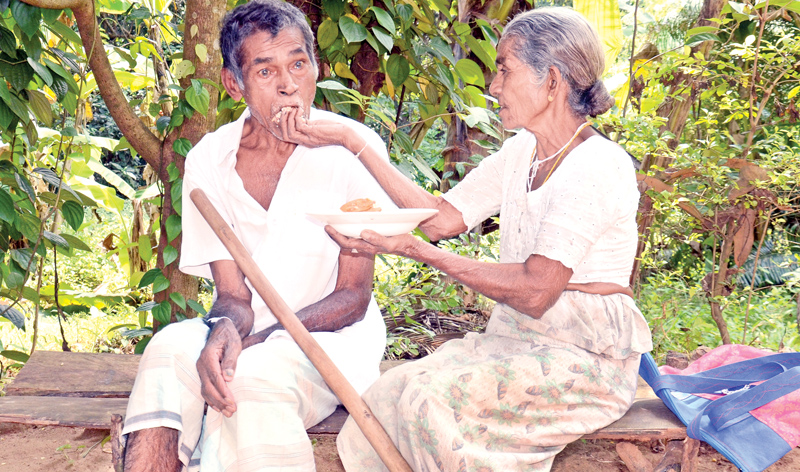The State may subsidize outright or in part the cost of building with options for leasing of units by beneficiaries from Government and /or selling back units. Units could also be auctioned to beneficiaries with a ceiling on bidding. Government could also invite franchise holders to replicate the model under a PPP agreement.
Protocols developed by Elders Secretariat in conjunction with Ministry of Health Geriatric Care specialists staffed by carers possessing NVQ2- 5 qualifications. Beneficiaries /families could collectively determine service providers.
The clusters could potentially be administered by cooperative societies for Government or an entity with shareholders between Government and collaborating entities.
It would provide for home based rehab services to improve their functional status and/or minimize further deterioration, receive home palliative care in accordance to their wishes to achieve maximal quality of life during their last days at home, cared for through a person centred care approach, receive appropriate continence and bowel care that strives to promote independence where appropriate, receive routine assessment for pain and appropriate management to relieve suffering from pain, in a safe physical environment that minimises the risk of falls and injuries, and have access to equipment that enhance their safety depending on identified needs and risks.
Impact: The adverse outcomes of ageing of migrant population are loneliness, lack of association with relatives and lack of access to social networks, insufficient income and livelihood, lack of aged friendly living arrangements, and long term care related issues. One in every four persons lives in semi-permanent houses. (These housing conditions may affect negatively on their quality of living. 60 % of the persons aged 80 years or over had experienced at least one disability while for age groups 60-69 and 70-79, it is reported as 25 % and 43 % respectively. However, it is important to note that 30 percent of aged persons who are in age 80 or over had experienced three or more number of difficulties). Having multiple difficulties effect on the health condition and long-term care needs of older persons.
Rationale
* In 2030, Sri Lanka is expected to have 22% of its population aged over 60 years.
* In 2012 there were 2,524,570 people (12.4%) living above the age of 60 years.
* Oldest-old group (80 or over) was 61 %.
* Women comprise the majority of both the total and56 % of total aged population in Sri Lanka marking the feminization of ageing.
* One in every three older women were widowed in Sri Lanka. In the young old category, (age60-69 years) one in every four females were widowed, while among middle-old category (age 70-79 years), about 42 % females were widowed. Among the oldest-old category, a half of the female population were widowed.
* In 2012, 24,535 older persons (1 %) were institutionalized (elder homes and other institutions).
* Kegalle, Matara, Jaffna and Galle districts about 15 % of their total population were 60 years or over.
Seniors are susceptible to – (i) Functional decline that reduces our mobility, strength, balance, agility, leading toward increasingly levels of frailty, (ii) Age-related disease including dementia, cardiovascular disease, osteoarthritis, osteoporosis, diabetes, cancer, strokes, age-related macular degeneration (AMD or ARMD), and glaucoma and (iii) Nonphysical challenges -vulnerability- from home and society, mental breakdown.
It requires – (i) Age-related adaptation: As the body becomes increasingly frail, our primary task is to successfully adapt to more profound levels of functional decline, frailty, and dependence and (ii) Age-related Health Care for Psychological Challenges of Aging. Dementia, Grief, Depression, Isolation, Reconciliation.
Concept
The proposal is for a PPP to build low cost homes built to ICTAD standards in clusters with central service facilities with each room and toilet costing less than SLR 500,000. The homes should be culturally and environmentally friendly with rooms 5-8 rooms around an inner courtyard with therapeutic gardening options.
Beneficiaries – Potential from - Pensioners 20,216 (North), 23,253 (East), Elders above 60 -125,500 (North), 122,065 (East). Annexed are details from Sri Lanka.
Criteria- Seniors without carers or pensioners with capacity to purchase or rent, free to homeless poor or abandoned seniors due to past conflict.
Land – Philanthropists could lease land for which a user fee could be recovered by the donor. It needs to be in a pleasant environment without encumbrances, with access to water, electricity and roads.
Building - designed to traditional designs in the area. Made of low cost material, with ample circulation of air. Each person could use a room with attached toilet serviced by central cooking, sitting, dining, exercise facilities.
Key features
* Autonomy: Seniors have their own private room and bathroom; further, they are free from scheduling and able to access social and shared areas of the house at any time, making it truly feel like home.
* Warmth: A warm living situation consists of a layout that encourages social activity, as well as furnishings and decor that provide comfort.
* Smart Technology: use smart technology such as adaptive devices.
* Green Living: In this case, “green” means living within the natural world. Green House homes let in plenty of sunlight, and include plants, garden areas, and outdoor access.
* Provide memory care services. - As seniors live longer, more of them will become susceptible to cognitive disabilities. As a result, senior housing projects increasingly must provide memory care units for those with Alzheimer’s disease and dementia. Designers also have to take into account the so-called “sun downing effect,” the agitation that dementia sufferers can experience at sunset. Large windows can bring this on, so adjustable shades and lighting have to be used to mitigate that impact.
Memory care facilities need to provide a wide range of safety features; in particular, they must prevent patients from leaving the grounds unattended.



Add new comment